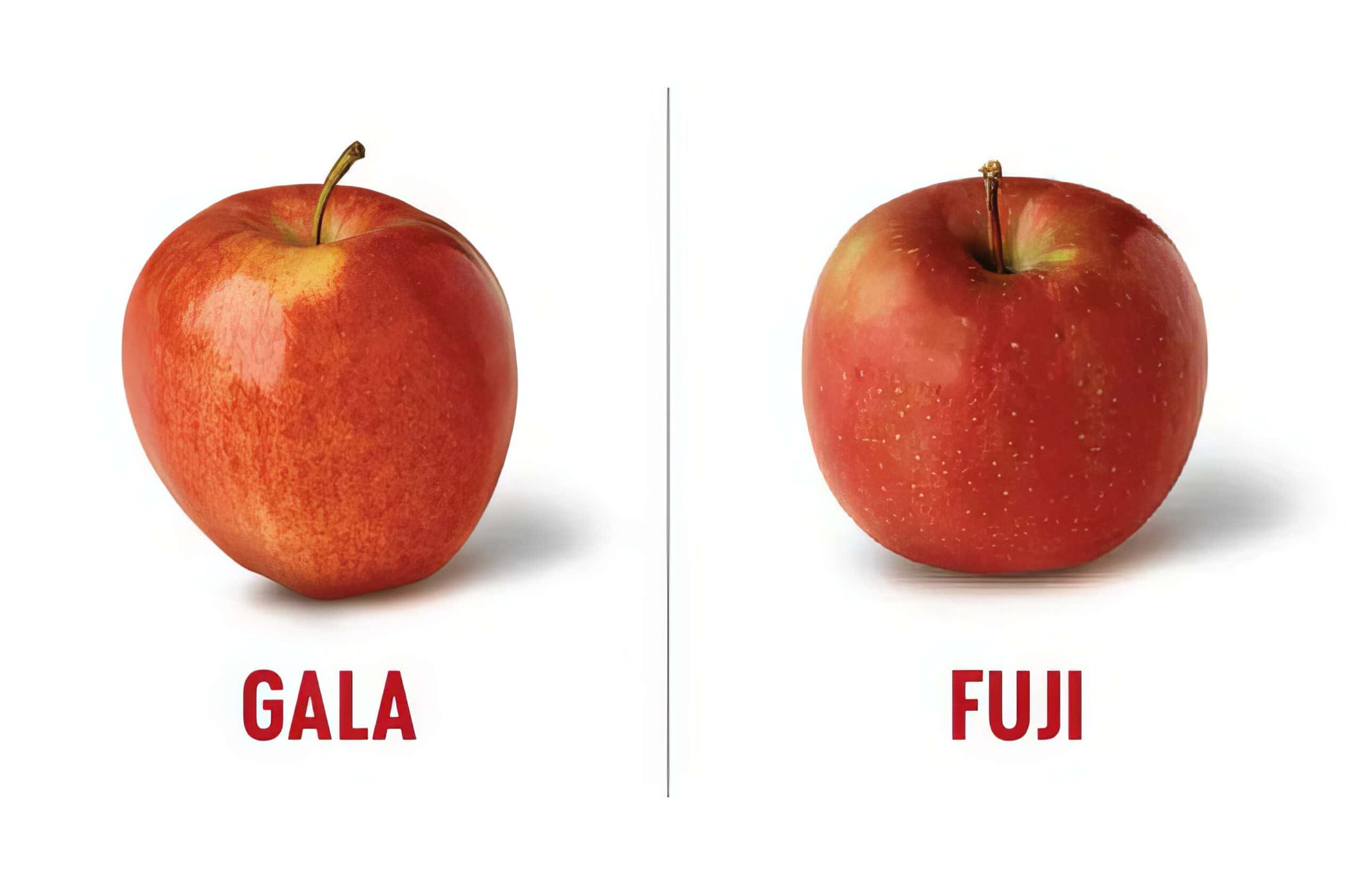Feeling stuck choosing between Fuji vs Gala Apples at the store? These two tasty apple varieties grew popular because of their sweet flavor and crisp texture. This quick guide will help you compare taste, nutrition, and uses—so you’ll know which fits your snack time, baking needs, or healthy lifestyle better in 2025.
Keep reading to pick your winner!
Key Takeaways
Fuji apples pack nearly twice the vitamin C (37.68 mg/kg) of Gala apples (19.74 mg/kg), boosting your body’s immunity naturally.
Calorie counters might prefer Gala apples—they contain only 57 calories per 100g, compared to 63 calories in Fujis, and have 9.52% higher dietary fiber content.
For baking pies or longer recipes, Fuji apples hold their form nicely, while Galas soften easily—perfect if you’re making homemade applesauce.
Texture-wise, Fuji apples are firm and crunchy, typically larger at about 75mm across; Gala apples, though, are smaller (around 55mm) and feel softer to bite.
Market forecasts point to Fuji apples staying more popular than Galas through 2025, thanks to their balanced taste, extended freshness on shelves, and richer nutrients.
Table of Contents
Appearance and Texture
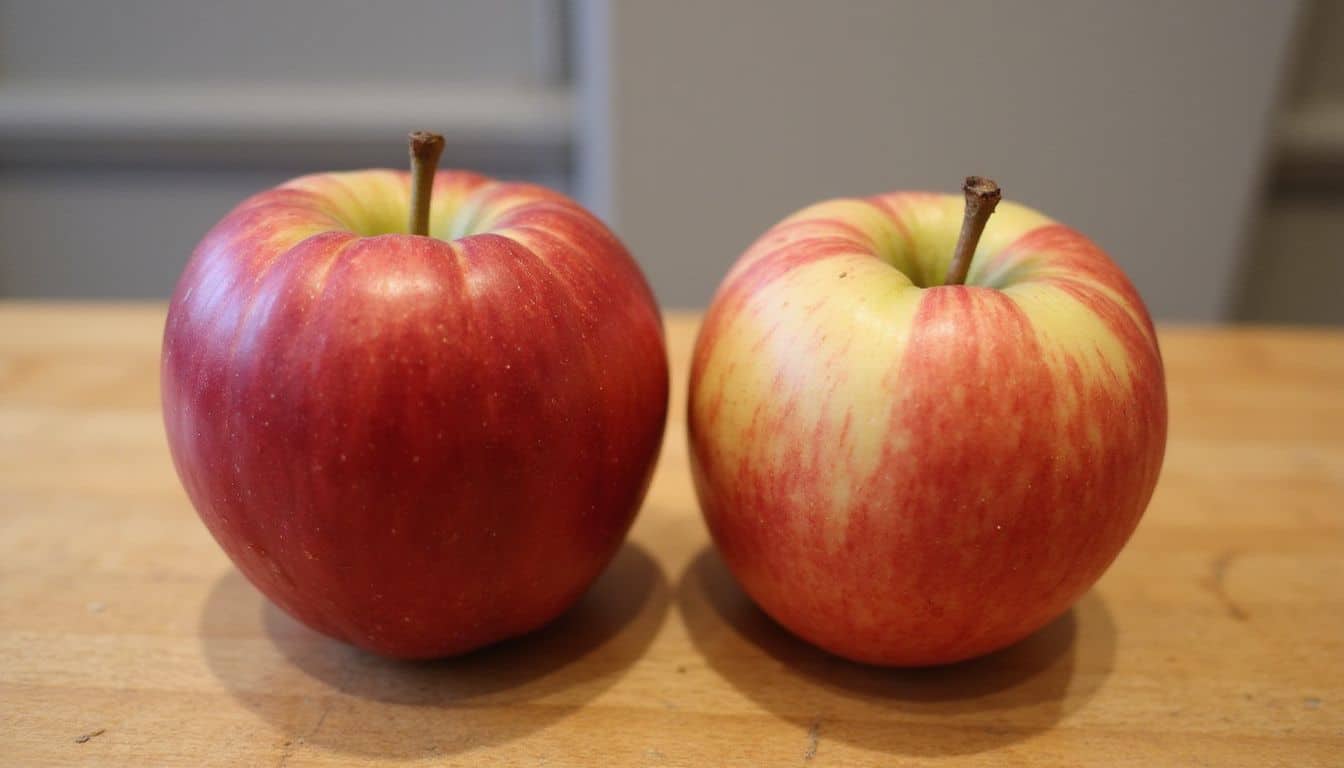 Fuji and Gala apples show clear differences in their looks and feel that might change your snacking choice. Fuji apples sport a yellowish-green base with red stripes, while Gala apples display a more uniform red blush over a yellow background with a smoother skin texture.
Fuji and Gala apples show clear differences in their looks and feel that might change your snacking choice. Fuji apples sport a yellowish-green base with red stripes, while Gala apples display a more uniform red blush over a yellow background with a smoother skin texture.
Visual differences
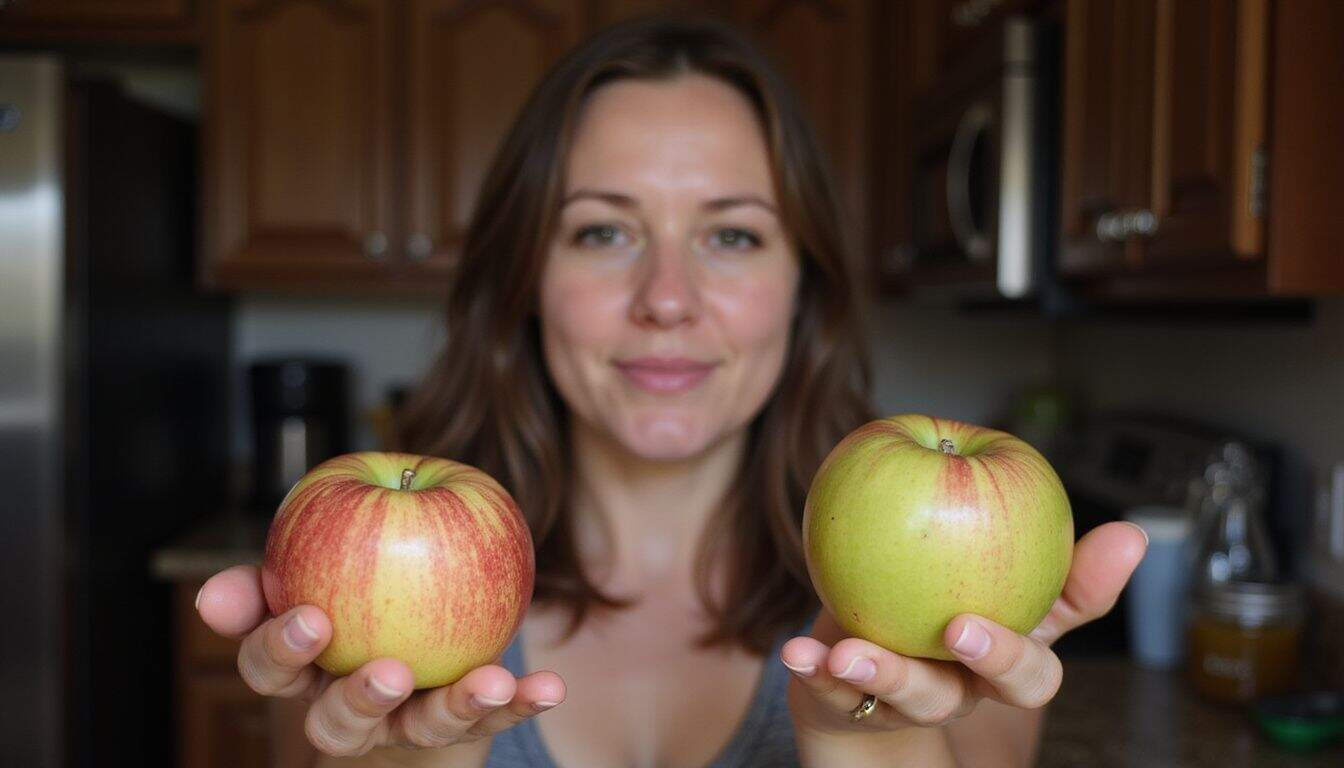
At first glance, Gala and Fuji apples clearly differ. Gala apples catch your eye with their attractive, red-and-yellow streaked skin—you’ve probably noticed them in grocery stores.
They measure smaller, around 55mm across, just right for a snack or to tuck into your lunch bag. Picking one up, you’ll notice the thin skin feels smooth and delicate in your hand.
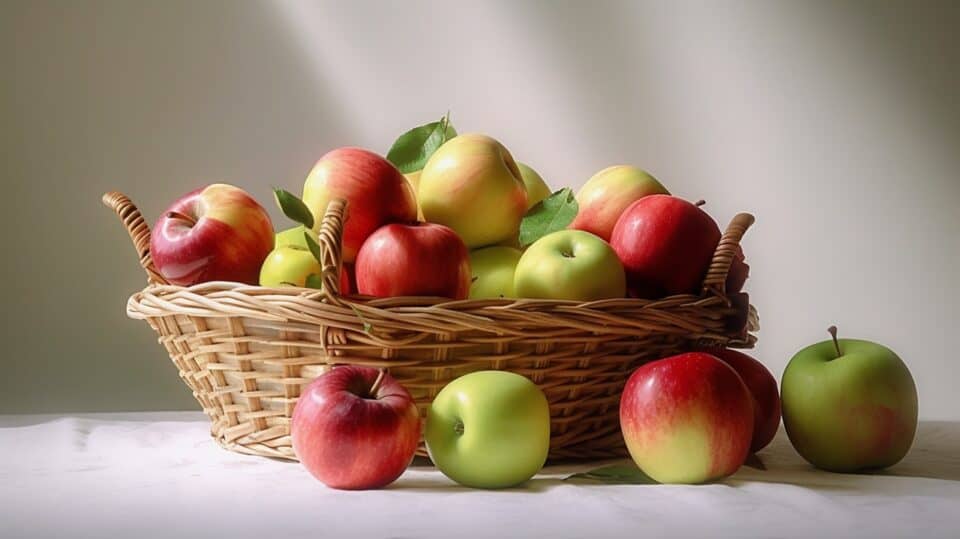
On the other hand, Fuji apples grab attention with richer coloring. Their skin mixes a green-yellow base and soft blushes of pink and red, often flowing together in striking patterns.
These apples grow larger, around 75mm wide, which makes them great if you prefer something more filling. A thicker skin protects Fuji apples better, giving them a sturdier texture—and a slightly firmer bite.
Texture comparison

Fuji and Gala apples each have unique textures that can influence the type you prefer. Fuji apples give you a firm, crisp bite that stays fresh even after storage. The dense flesh crunches satisfyingly, releasing juice slowly.
Many women prefer Fuji apples for snacks or packed lunches, because their sturdy texture withstands bruising better. The medium-thick skin also helps these apples keep their shape nicely.
The texture of an apple tells you as much about its character as its flavor does.
In contrast, Gala apples offer a softer, more delicate texture. Their thin skins break easily, leading to flesh that’s both tender and slightly crisp. Gala apples can be easier to eat for children or adults with sensitive teeth.
Their fine-grained flesh melts quickly, delivering sweetness sooner than Fujis. Each variety behaves uniquely in recipes too—Fuji apples hold their shape firmly while Gala apples soften faster during cooking, changing how you might use them.
Taste and Sweetness

Fuji apples burst with honey-sweet flavor and crisp juiciness that lingers on your tongue. Gala apples offer a milder sweetness with floral notes and a perfect balance of sugar to acid that makes them a favorite for fresh eating.
Flavor profile of Fuji apples
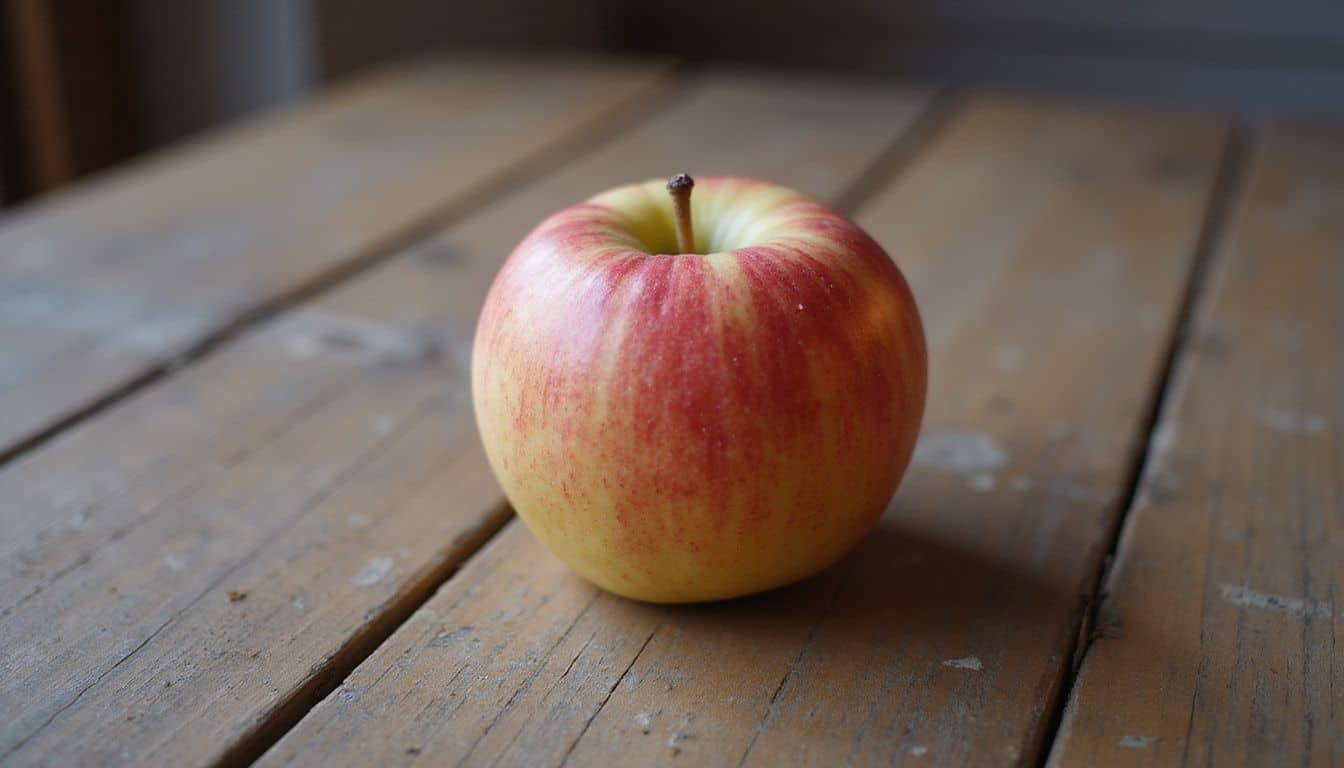
Fuji apples deliver an ideal balance of sweetness and zing, making my taste buds come alive. On a sweetness scale, they rate about 2 out of 5, with a gentle citrus note to set them apart from other apples.
I bit into one just yesterday—and loved how crisp juice filled my mouth with bright, lively flavor. That balance between sweet and tart means the flavor stays interesting, not overly sugary or sharply sour.
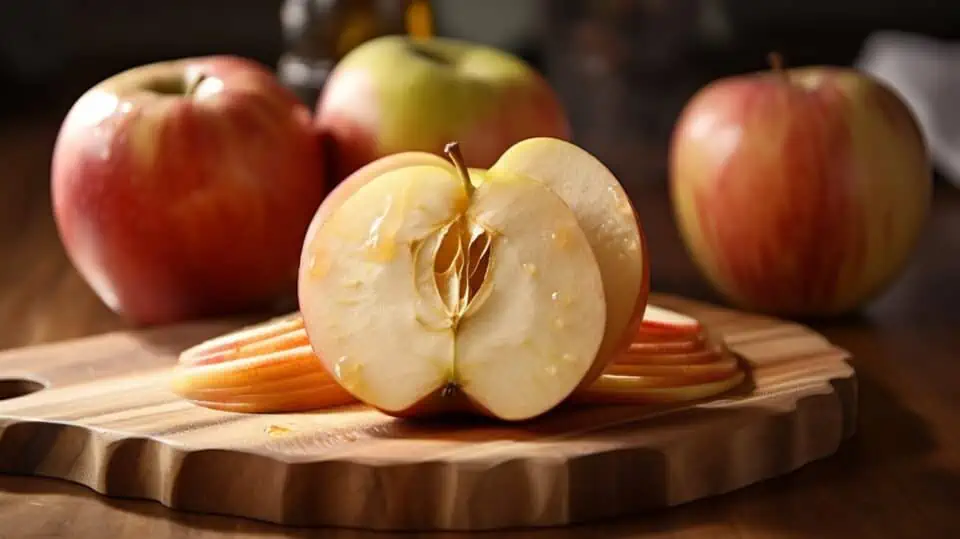
These crunchy apples first came onto the market in 1962, originating from a cross between the Red Delicious and Ralls Janet varieties. Their firm texture keeps them fresher longer, even sitting in your kitchen fruit bowl for days.
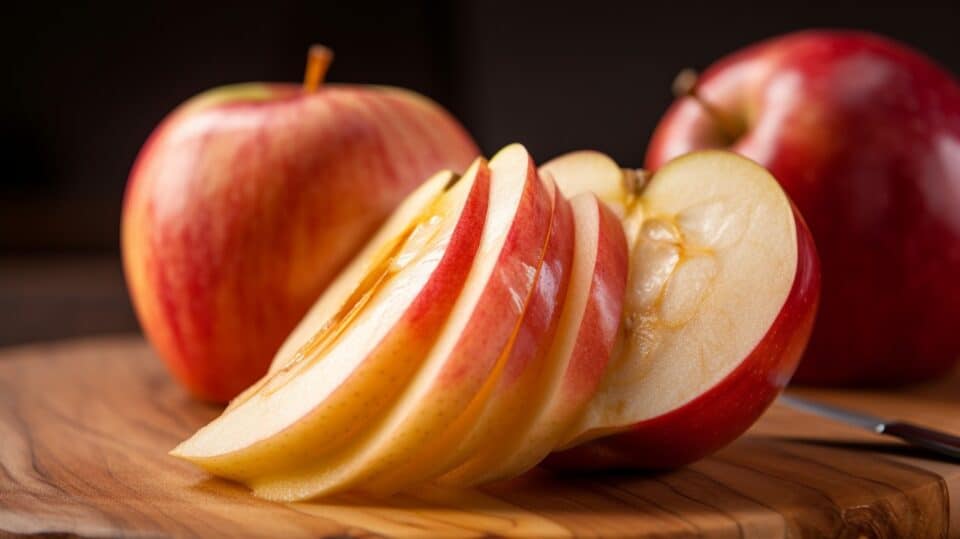
Many women tell me Fuji apples are their favorite snack choice. The satisfying crunch curbs hunger, and their natural sugars give you an energy boost, without the lows that processed sugar brings.
Plus, they provide vitamin C, which gives your immune system a nice lift as you enjoy each juicy bite.
Flavor profile of Gala apples

If you enjoy the crisp sweetness of Fuji apples, Gala offers an entirely different taste to explore. Galas deliver mild sweetness without much tartness, making them easy to snack on often.
Rosy-colored and inviting, these apples offer a pleasing blend of natural sugars and gentle acidity, creating their soft, distinctive sweetness. Many women prefer Galas as an everyday snack, thanks to this approachable flavor.
The taste of Gala apples often reveals subtle hints of vanilla and even a delicate floral note, setting them apart from most other kinds.
Gala apples deliver nature’s candy in every bite – sweet, mild, and perfectly balanced.
While Granny Smiths may appeal to those craving something tart, Galas provide gentler sweetness great for enjoying fresh. Whether sliced into salads or paired with cheeses, their tasty character always shines through.
Sugar levels can change slightly depending on growing conditions, yet Gala apples keep that reliably mild taste wherever they’re grown. Because of this consistent natural sweetness, they’re popular among women looking for healthier snack options, relying on fruit’s natural sugars instead of artificial sweeteners or processed sugar.
Nutritional Comparison

Fuji and Gala apples pack different nutrients that can boost your health in unique ways. Both varieties offer dietary fiber and vitamins, but they differ in their exact amounts of vitamin C, potassium, and natural sugars.
Vitamins and minerals

Apples pack a nutritional punch beyond their sweet taste. Both Fuji and Gala varieties offer different vitamin and mineral profiles that support women’s health in unique ways. Let’s compare what each apple brings to your daily nutrition in 2025.
| Nutrient | Fuji Apples | Gala Apples | Health Impact |
|---|---|---|---|
| Vitamin C | 37.68 mg/kg | 19.74 mg/kg | Fuji contains almost double the vitamin C, boosting immune function and skin health |
| Phosphorus | 13 mg per 100g | 11 mg per 100g | Fuji provides 18.18% more phosphorus for bone strength and energy production |
| Iron | 0.1 mg | 0.12 mg | Gala edges out with higher iron content, supporting oxygen transport in blood |
| Copper | 0.03 mg | 0.02 mg | Fuji offers more copper, aiding in collagen formation and energy production |
| Manganese | 0.03 mg | 0.04 mg | Gala provides more manganese for bone health and metabolism support |
Women seeking immune support might prefer Fuji apples for their impressive vitamin C content. The health benefits of Fuji apples extend to better bone health thanks to higher phosphorus levels. Gala apples shine with their iron content, making them great for women who need to maintain healthy blood counts.
Morning snackers can grab a Gala for its manganese boost to kickstart metabolism. Active women might reach for Fuji apples post-workout to benefit from their higher vitamin C for muscle recovery. Each variety offers a unique mix of nutrients that complement different health needs throughout your day.
Calorie content
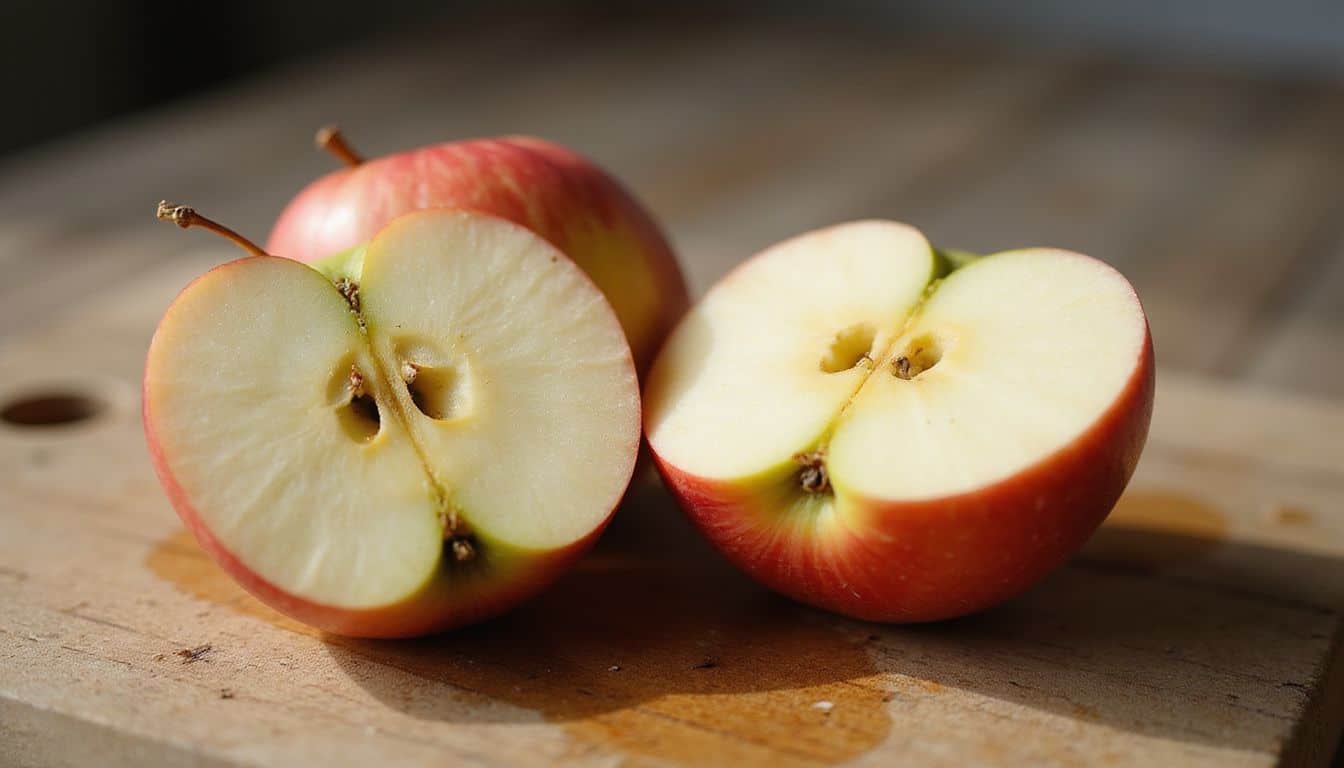
Fuji apples deliver more calories—63 per 100 grams—as opposed to Gala apples, which provide around 57 calories. That’s roughly 10.53% higher, a noticeable difference if you closely monitor daily calorie counts.
Fujis also have about 1.5 times the amount of fat and nearly double the glucose compared to Gala apples. These delicious fruits offer natural sweetness, fueling your energy levels without causing sugar crashes like refined sugars typically do.
Gala apples, though, excel in dietary fiber and protein content. They have roughly 9.52% higher dietary fiber—2.3 grams versus Fuji’s 2.1 grams—and notably 25% more protein, at 0.25 grams compared to Fuji’s 0.2 grams.
This higher fiber content supports healthy digestion and keeps hunger at bay for longer periods.
Both apple varieties suit healthy eating habits thanks to their lower glycemic index, which means they won’t cause rapid jumps in your blood sugar. They’re tasty yet practical options to fit smoothly into your daily meals, snacks, and nutrition goals.
You can check out more details on Gala apples’ nutritional benefits here: health benefits of Gala apples.
Now, let’s see how these apples actually stack up in cooking, baking, and everyday kitchen use.
Best Uses for Each Apple

Each apple shines in different recipes based on its unique traits. Fuji and Gala apples offer distinct cooking experiences that can transform your favorite dishes from good to amazing.
Fuji apples in cooking and baking

Fuji apples truly shine as kitchen favorites, bringing sweet-tart flavor and crunchy texture to tons of recipes. Here’s why they’re great for cooking:
- Fuji apples keep their shape well during baking. They’re perfect for apple pies, staying firm without getting mushy.
- Natural sugars in these apples caramelize easily in the oven, giving your dessert a deep sweetness, without adding regular sugar.
- The firm apple flesh takes heat well, ideal for recipes like apple curd, which need longer cooking at high temperatures.
- Toss diced Fuji apples into your oatmeal for extra crunch and a nice boost of vitamin C that isn’t lost during cooking.
- Their crispness adds just enough texture to apple butter recipes, so you don’t end up with overly smooth spreads.
- Fuji apples match nicely with cinnamon in baked treats, delivering that comforting apple pie taste many home cooks love.
- The natural sweetness balances sour ingredients like lemon juice—reducing extra sugar in sweet-and-sour dishes.
- Even after cooking, Fuji apples keep good dietary fiber levels, helping digestion and fitting easily into a healthy diet.
- Because Fuji apples release less juice during baking, your pie crust stays crisp instead of soggy.
- Their mild citrus notes taste great in sweet and savory dishes alike—perfect for main dishes or desserts.
Now let’s check out Gala apples, and see how they stack up in your kitchen favorites.
Gala apples in cooking and baking
Gala apples have qualities that make them stand out for particular kitchen uses:
- Gala apples offer a naturally sweet flavor and juicy bite, great for quick-cooking dishes.
- Their sweetness means you can cut back sugar when adding Galas to oatmeal or smoothies.
- With their softer flesh, Galas cook down quickly, creating smooth applesauce in no time.
- Thanks to a subtle, honey-like taste, Gala apples blend beautifully into fresh salads without overwhelming other flavors.
- Making apple butter from Galas results in an extra creamy consistency because of their tender texture.
- Due to their softer structure, Gala apples tend to become overly soft and mushy during baking.
- These apples have more water than other varieties, leading to excess moisture in pies, tarts, and baked treats.
- Granny Smith apples stay firm under heat and provide a tart taste, making them better choices for oven-baked desserts.
- Chefs commonly suggest Galas for fresh or lightly cooked dishes rather than prolonged baking.
- The naturally sweet taste of Gala apples makes them great snacks for a healthy and balanced diet.
- Pair Galas with bold, flavorful cheeses on appetizer platters—the mild apple balances strong tastes perfectly.
- Gala apples deliver solid nutrition, offering dietary fiber and vitamin C, all with relatively few calories.
- Energy from Galas mostly comes from simple fruit sugars rather than heavy carbohydrates.
Fuji vs. Gala Apples: How Will Preferences Change in 2025?

Apple trends suggest Fuji apples will keep growing in popularity through 2025, thanks to their ideal balance of sweetness and tart flavor. Many women now prefer Fuji apples for their firm bite and impressive shelf life, fitting easily into busy daily routines.
The satisfying crunch, combined with higher vitamin C levels, makes Fuji apples a favorite among health-conscious shoppers. Just last week, I tasted both varieties and found Fuji apples lasted nearly twice as long as Galas in my fridge.
Industry patterns indicate Fuji apples will top the charts for cooking, while Gala apples hold steady as a quick snack favorite. Women mindful of sugar intake often pick Gala apples, drawn to their naturally sweet taste with lower sugar levels.
Both varieties provide essential nutrients—like dietary fiber and vitamin B6—that boost heart health. The sweetness of apples chart ranks Fuji and Gala highly in consumer taste tests, but Fuji takes a slight lead for its richer flavor blend, offering delicate hints of honey and citrus.
People Also Ask
Which apple tastes sweeter, Fuji or Gala?
Fuji apples taste sweeter because they naturally contain more table sugar. Gala apples have a gentler sweetness, easy on the palate, making them great for everyday snacks.
Fuji or Gala—which apple works best in apple pie?
Gala apples taste good in pies but soften quite a bit after baking. Fuji apples stay firmer during baking and add extra sweetness, so you won’t need as much added sugar.
What vitamins do Fuji and Gala apples provide?
Both Fuji and Gala apples offer vitamins C, A, and B6. You’ll also find small amounts of vitamin E and vitamin K in them, making these apples great additions to a nutritious diet.
How do these apples affect blood sugar?
Both varieties have a moderate glycemic index (GI). Fuji apples, having more sugar, may lead to a slightly higher insulin response. Still, dietary fiber in each variety helps slow sugar absorption, keeping blood sugar stable.
Which apple provides higher dietary fiber?
You’ll get slightly more dietary fiber from Fuji apples than Gala. This extra fiber can help digestion, and it might also lower bad cholesterol (LDL) levels.
Can eating Fuji or Gala apples support health?
Absolutely! Both Fuji and Gala apples offer key nutrients and dietary fiber. They’re ideal snacks to satisfy sweet cravings while providing energy and nutrients vital for a healthy metabolism.
References
https://optimisticmommy.com/gala-vs-fuji-apples-whats-the-difference/
https://www.tidbitsofexperience.com/fuji-vs-gala-apples/
https://applerankings.com/fuji-apple-review/
https://www.fruitsmart.com/blog/the-apple-sweetness-scale-choosing-the-best-apples-for-every-taste/ (2024-10-24)
https://pmc.ncbi.nlm.nih.gov/articles/PMC11637219/
https://versus.com/en/fuji-apple-vs-gala-apple
https://vegnt.com/compare/apples_raw_gala_with_skin-vs-apples_raw_fuji_with_skin.html
https://urbanfarmie.com/fuji-apples-vs-gala-apples/ (2023-02-18)
